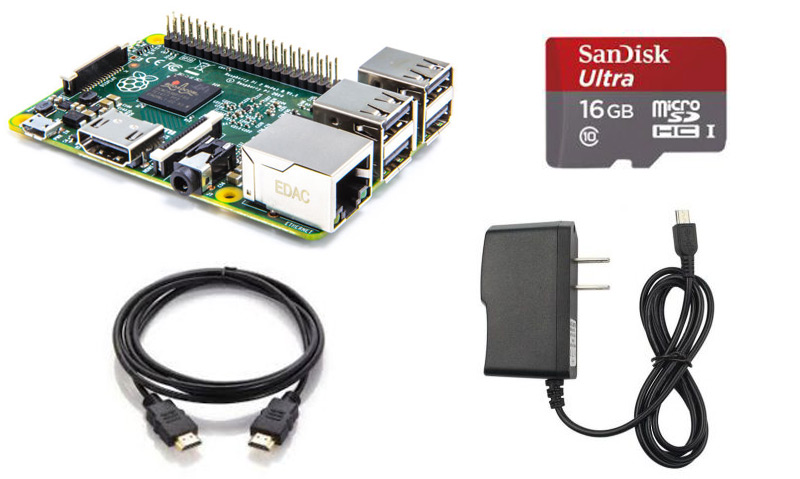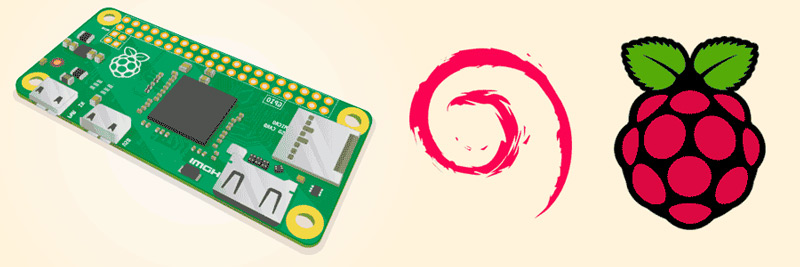
UPDATED ✅ Do you want to have your RASPBERRY card up to date? Discover these commands that will give the maximum benefit ⭐ ENTER HERE ⭐ and I’ll explain it to you ✅ STEP BY STEP ✅
miniature PCs They have always turned out to be something quite interesting for the user, but especially for those who like to explore much more in computing. have a system more than capable of running multimedia content or carrying out office tasks with a size smaller than the palm of your hand is something that sounds pretty good, and it is precisely what the raspberry pi boardsthe great favorites of the most curious in the world of technology.
A proposal that born in 2012 and that he managed to capture numerous glances for what he brought with him. Raspberry appeared in the sector as an ultra-small computerbut with more than modest benefits and minimal cost. A plaque less than 9 centimeters long with enough connectors to do the tasks of a modest computer, but occupying less than a tenth of what a conventional PC tower could occupy. Practically, like a pocket computer.
Since then, in addition to launching new revisions of the Raspberry Pi boards with technical improvements and size adjustments, too updates have arrived for your system, or kernel, along with novelties in the form of programs that improve and multiply its possibilities to infinity. We are going to focus on all that software and system cluster in this guide, since we are going to explain how to update raspberry pi with raspbian through a series of simple commands that we are also going to detail so that you know what you do at each moment and step.
Step-by-step tutorial to have our Raspberry Pi installed and updated

For those who don’t know, Raspbian is the operating system that these boards havea variation of Linuxopen source, oriented to its use in these devices and that have the property of being extremely moldable.
Before you start typing commands like a Cossack to update your raspberry pi using raspbian, you need to have a series of fundamental components. First of all, and as is evident, you need to have a Raspberry board. The model does not matter, although it is best to have the Raspberry Pi 3 to do this update
In addition to this, you need a microSD card with a minimum of 4 GB of storage. If it can be 16 GB, even better, since it will be the place where all the information is stored, not only about the update, but also about the programs that you could use. It also adds a power supply with a micro-USB connector (like that of smartphones) and an HDMI cable to connect your plate to the television and have an image when you are going to use it.
Once you have all these components, the next thing is to connect the Raspberry Pi to the internet. You can do it through the traditional LAN cable or taking advantage of a Wi-Fi connection, it is something that is left to your choice. Although, yes, it is important that you do not overlook this step, since otherwise you will not be able to advance.
Now, it’s time to enter the command console and start installing the updates. Open it and start by entering the line that we explain below, although without forgetting that you need to have access as the main user to be able to make these modifications.

sudo apt-get -y update
This command is used to update the repositories of your Raspberry, which basically refers to renewing the catalog of everything that is available to her. The addition “-Y” is used so that it does not ask if you want to update the content, assuming that the user’s response is affirmative.
sudo apt-get -y upgrade
Now that we have the updated repositories and our device knows what is available to it, it is time to renew all programs possible. That is why the line just quoted is introduced. Enter it and let it carry out the procedure, which can take a long time if the connection is not going too well. Take it easy and wait for it to finish before taking the next step.
uname -r
With this command, we find out the kernel version that is installed. Since it’s probably quite an old one, now will be the time to update this one for much greater support and more noticeable power management, the best way to achieve that the relationship between performance and consumption be as tight as possible and so that, in addition, there are no problems in case you need some type of assistance in the networks.
sudo rpi-update
Precisely This command is the one in charge of making the big update of your Raspberry Pi. As you type it in, you can see how go to github to browse its repositories and download the new kernel to install it to your internal memory. Let him do all this procedure and wait a bit. When it finishes, it will ask you to restart, something you must do in order to apply the changes.
Once you restart re-enter the command uname -r in the console to check the version you have installed, as you can see it is already completely new and you can take advantage of all its functions.
The process, as described, it’s not too complicated. By entering this list of text commands whenever you want, you can start from scratch to periodically check if you are up to date on the kernel version and, if this is not the case, install a completely new one together with a good repository of programs that can be very useful to you.
Performing both program and kernel updates are necessary if you want to always have the latest in terms of performance and support. Users are always updating themselves with the revisions that come out and, in turn, solving all the possible doubts that appear thanks to this support that is provided, which always focuses on the most modern revisions.
Hardware